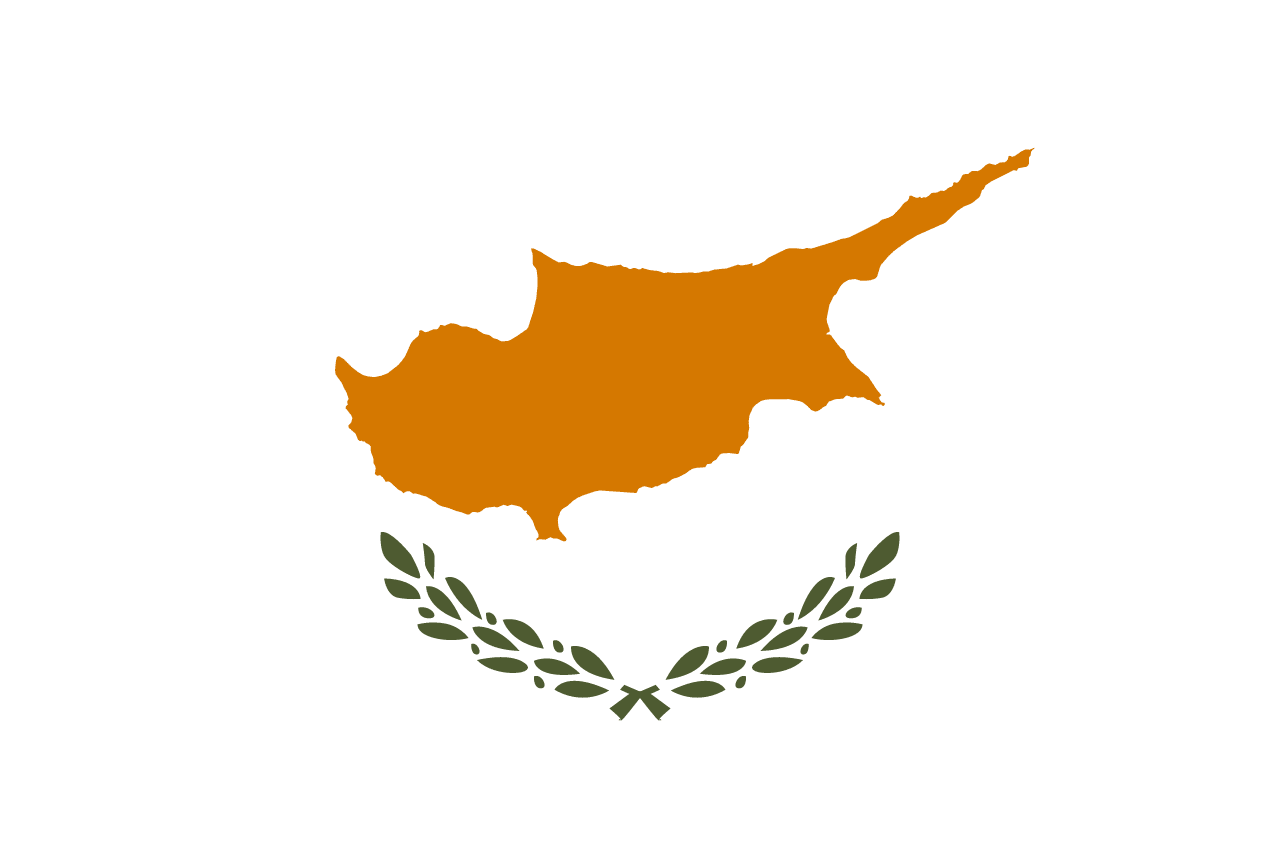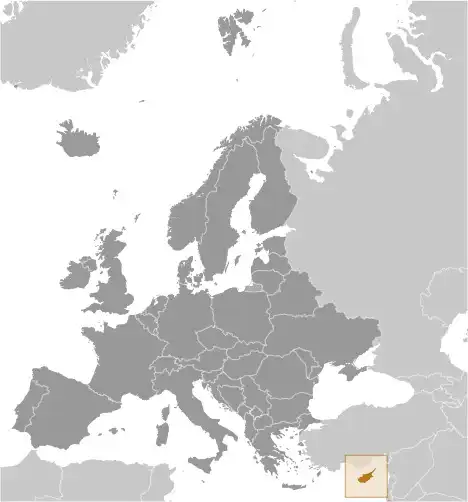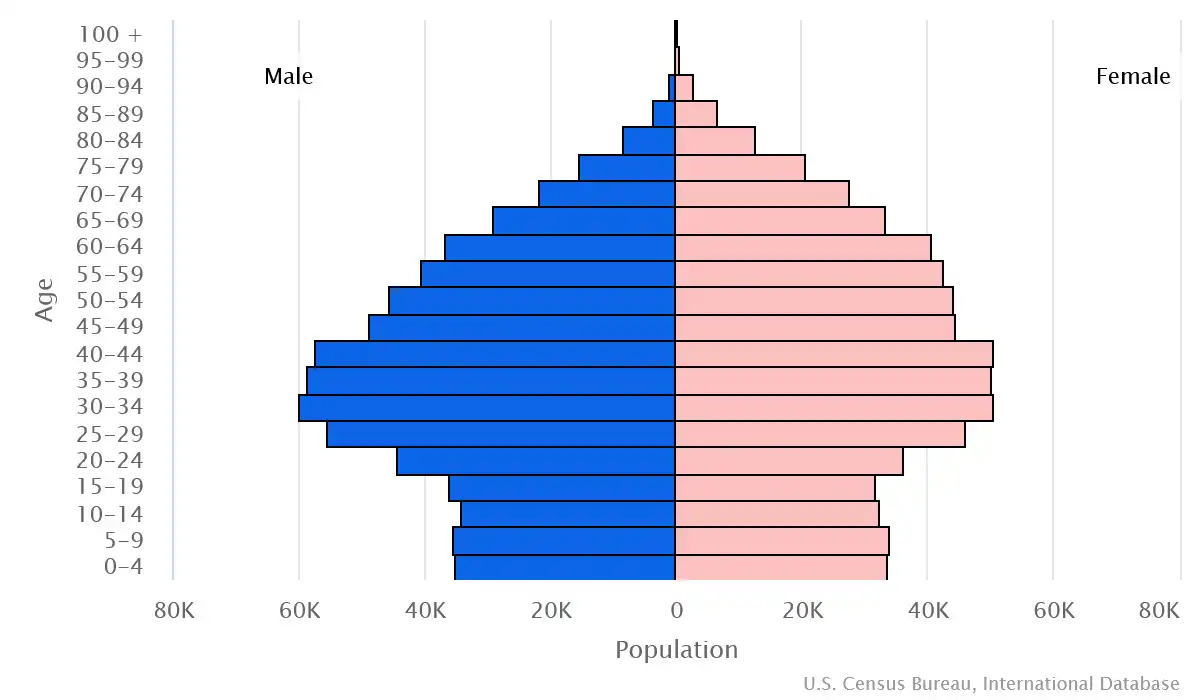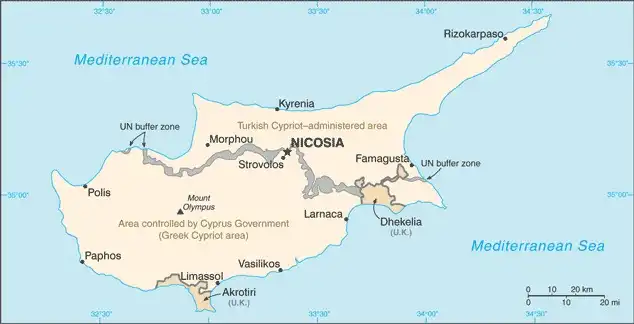
Cyprus Country Profile
Key Facts of Cyprus

| Government type: | Republic of Cyprus - presidential republic; self-declared "Turkish Republic of Northern Cyprus" (TRNC) - parliamentary republic with enhanced presidency |
| Capital: | Nicosia (Lefkosia/Lefkosa) |
| Languages: | Greek (official) 80.9%, Turkish (official) 0.2%, English 4.1%, Romanian 2.9%, Russian 2.5%, Bulgarian 2.2%, Arabic 1.2%, Filipino 1.1%, other 4.3%, unspecified 0.6% (2011 est.) |
Cyprus Demographic Data
Ethnic Groups in Cyprus(2011 est.)
Religious Groups in Cyprus (2011 est.)
Age pyramid of Cyprus

Cyprus Economy Statistics
Economic overview of Cyprus
services-based, high-income EU island economy; heavy tourism; sustained growth between recovery of national banking system and COVID-19 trade restrictions; high living standards; a known financial hub, its stock exchange functions as an investment bridge between EU-and EEU-member countries
Cyprus Real GDP (purchasing power parity) in Billion $
Cyprus Real GDP per capita in $
Cyprus's Exports & Imports in billion $
Top 5 Import Partnerin 2022 (54%) of Cyprus
Top 5 Import Commodities in 2022 of Cyprus
- refined petroleum ⛽
- ships 🚢
- cars 🚗
- packaged medicine 💊
- garments 👕
Top 5 Export Partnerin 2022 (38%) of Cyprus
Top 5 Export Commodities in 2022 of Cyprus
- ships 🚢
- refined petroleum ⛽
- packaged medicine 💊
- cheese 🧀
- scented mixtures 🌸🧴
Geography of Cyprus
Map of Cyprus

Land and Water Distrubtion of Cyprus
Natural Resources of Cyprus
- copper 🟧🪙
- pyrites 🪙
- asbestos 🏭💨
- gypsum ⚪🪨
- timber 🌲
- salt 🧂
- marble 🪨
- clay earth pigment 🧱
Climate inCyprus
temperate; Mediterranean with hot, dry summers and cool winters
History of Cyprus - a Summary
A former British colony, Cyprus became independent in 1960 after years of resistance to British rule. Tensions between the Greek Cypriot majority and Turkish Cypriot minority came to a head in December 1963, when violence broke out in the capital of Nicosia. Despite the deployment of UN peacekeepers in 1964, sporadic intercommunal violence continued and forced most Turkish Cypriots into enclaves throughout the island. In 1974, a Greek Government-sponsored attempt to overthrow the elected president of Cyprus was met by military intervention from Turkey, which soon controlled more than a third of the island. In 1983, the Turkish Cypriot administered area declared itself the "Turkish Republic of Northern Cyprus" (TRNC), but it is recognized only by Turkey. A UN-mediated agreement to reunite Cyprus, the Annan Plan, failed to win approval from both communities in 2004. The most recent round of reunification negotiations was suspended in 2017 after failure to achieve a breakthrough.
The entire island joined the EU in 2004, although the EU acquis -- the body of common rights and obligations -- applies only to the areas under the internationally recognized government and is suspended in the TRNC. However, individual Turkish Cypriots able to document their eligibility for Republic of Cyprus citizenship have the same legal rights accorded to citizens of other EU states.
